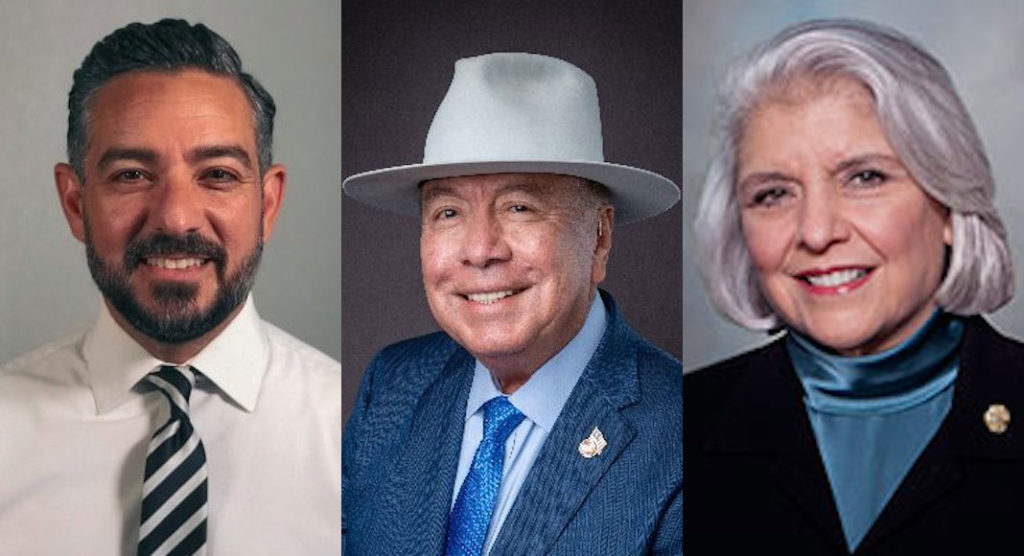
Texas Border Business
By Senator César J. Blanco (El Paso), Senator Juan “Chuy” Hinojosa (McAllen), and Senator Judith Zaffirini (Laredo)
Texas Governor Greg Abbott recently held a press conference to announce his plans for the State of Texas to build a physical border wall with state taxpayer dollars. He also indicated a new approach to charge immigrants and asylum seekers with state crimes to create a criminal record and jail them. At the press conference, Governor Abbott was surrounded by lawmakers from various parts of the state, but not a single lawmaker who joined him represents a border community.
Because border lawmakers live and work on the border every day, we understand the concerns of our constituents and the challenges our communities face. In our representative government, the voice of border lawmakers are the voice of border communities and should be at the table discussing issues that impact our districts. For whatever reason, we were omitted from major policy discussions related to the border. We support legal immigration, not open borders, and have supported transparent, accountable, and smart border security for years.
Lawmakers from both political parties agree border security is a federal responsibility. For years, however, Texas has supplemented federal efforts by spending billions of state taxpayer money on this federal responsibility, instead of on other pressing state needs. This session, for example, Texas appropriated another $1.1 billion for border security. None of that money was earmarked for a border wall.
The federal government, dating back to President George W. Bush, has already built fencing and walls in the highest traffic areas. Building a physical wall from El Paso to Brownsville would be the most expensive and least effective way to achieve border security, and it would be a colossal waste of taxpayer money. A physical wall made of cement or steel slats is a 3rd century solution to a 21st century migration problem. Anyone who commits a crime, whether immigrant or legal resident, should be arrested. But, Texas shouldn’t circumvent federal immigration and asylum laws by creating new ways to criminalize and to jail undocumented immigrants and asylum seekers. This expensive proposition would overfill local prisons, which already are stretched thin—with non-dangerous persons and separate families looking for refuge and the American dream.
The new federal administration is working on addressing the root causes of these migration waves that stress our borders, but this will take time. The bottom line is that Congress needs to act immediately to pass immigration reform and provide resources to stop the criminal elements from crossing the border.
If Texas, however, is going to be in the business of border security in the meantime, the state needs to be accountable, transparent and smart with taxpayer dollars. The state also should hear from border lawmakers. If Texas is to be committed to going down this path, as lawmakers who represent districts along the Texas-Mexico border, we suggest the following smart measures as a starting point:
- Building a virtual or smart wall with fiber optic lines along the border, supported by technology, drones, motion sensors, cameras, etc. Virtual infrastructure for border security could be accomplished at a fraction of the cost of a physical wall; bolster real time monitoring, detection, and response; and bridge the digital divide for law enforcement along the border.
- Reimbursing local border communities and private property owners for costs incurred related to border security and humanitarian aid with proceeds from asset forfeitures related to border crimes and other state grants. Our border communities are on the front lines as local law enforcement support border security efforts, provide humanitarian assistance for needy families and children, and humanely process the remains of deceased migrants. Because private property owners along the border also sustain property damage by human traffickers and cartels to fences, barns, outhouses, and livestock, they should be reimbursed for related expenses.
- Cracking down on gun trafficking in Texas and incentivizing the reporting of lost or stolen guns to law enforcement. If Texas is serious about combatting cartels and armed human traffickers, we should find ways to disarm them. Hundreds of thousands of firearms are smuggled from the U.S. into Mexico every year and are traced to 70 percent of all weapons seizures following murders, robberies and drug busts. Approximately 41 percent of illicit guns utilized to commit a crime in Mexico are from Texas.
- Reducing the demand for drugs, beginning with our children, and the related flow of money into Mexico. This will require education, intervention, rehabilitation and law enforcement programs. The flow of drugs from Mexico into Texas and of cash from here to there will stop when the demand for drugs is reduced or eliminated.
- Modernizing ports of entry with technology and intelligent transportation systems. Fentanyl and most illicit drugs from Mexico enter the U.S. through the ports of entry. Investing in our ports of entry can make our border more secure while boosting our economy.
- Improving border rail inspection stations required by U.S. Customs and Border Patrol for border rail lines owned by the State of Texas. Some border rail lines owned by Texas cross the border and need improved facilities for the inspection and processing of rail cars.
These are only a few ideas from lawmakers who represent the border and who understand our region’s problems and related solutions. By funding these proposals instead of a wall, we will make great strides while using state taxpayer dollars to benefit Texans and without funding programs that should be the responsibility of the federal government.
The issue of immigration and border security has been a challenge for decades and plagued by partisan politics. These issues will not be solved overnight or by one party. We are confident if we leave politics at the door, we can find common ground from which to address these challenges. That first requires including border lawmakers at the table.















